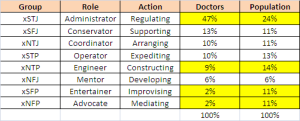 If the headlines in the newspapers are a measure of social anxiety then healthcare in the UK is in a state of panic: “Hospitals Fear The Winter Crisis Is Here Early“.
If the headlines in the newspapers are a measure of social anxiety then healthcare in the UK is in a state of panic: “Hospitals Fear The Winter Crisis Is Here Early“.
The Panic Button is being pressed and the Patient Safety Alarms are sounding.
Closer examination of the statement suggests that the winter crisis is not unexpected – it is just here early. So we are assuming it will be worse than last year – which was bad enough.
The evidence shows this fear is well founded. Last year was the worst on the last 5 years and this year is shaping up to be worse still.
So if it is a predictable annual crisis and we have a lot of very intelligent, very committed, very passionate people working on the problem – then why is it getting worse rather than better?
One possible factor is Temperament Treacle.
This is the glacially slow pace of effective change in healthcare – often labelled as “resistance to change” and implying deliberate scuppering of the change boat by powerful forces within the healthcare system.
Resistance to the flow of change is probably a better term. We could call that cultural viscosity. Treacle has a very high viscosity – it resists flow. Wading through treacle is very hard work. So pushing change though cultural treacle is hard work. Many give up in exhaustion after a while.
So why the term “Temperament Treacle“?
Improvement Science has three parts – Processes, Politics and Systems.
Process Science is applied physics. It is an objective, logical, rational science. The Laws of Physics are not negotiable. They are absolute.
Political Science is applied psychology. It is a subjective, illogical, irrational science. The Laws of People are totally negotiable. They are arbitrary.
Systems Science is a combination of Physics and Psychology. A synthesis. A synergy. A greater-than-the-sum-of-the-parts combination.
The Swiss physician Carl Gustav Jung studied psychology – and in 1920 published “Psychological Types“. When this ground-breaking work was translated into English in 1923 it was picked up by Katherine Cook Briggs and made popular by her daughter Isabel. Isabel Briggs married Clarence Myers and in 1942 Isabel Myers learned about the Humm-Wadsworth Scale, a tool for matching people with jobs. So using her knowledge of psychological type differences she set out to develop her own “personality sorting tool”. The first prototype appeared in 1943; in the 1950’s she tested the third iteration and measured the personality types of 5,355 medical students and over 10,000 nurses. The Myers-Briggs Type Indicator was published 1962 and since then the MBTI® has been widely tested and validated and is the most extensively used personality type instrument. In 1980 Isabel Myers finished writing Gifts Differing just before she died at the age of 82 after a twenty year long battle with cancer.
The essence of Jung’s model is that an individual’s temperament is largely innate and the result of a combination of three dimensions:
1. The input or perceiving process (P). The poles are Intuitor (N) or Sensor (S).
2. The decision or judging process (J). The poles are Thinker (T) or Feeler (F).
3. The output or doing process. The poles are Extraversion (E) or Intraversion (I).
Each of Jung’s dimensions had two “opposite” poles so when combined they gave eight types. Isabel Myers, as a result of her extensive empirical testing, added a fourth dimension – which gives the four we see in the modern MBTI®. The fourth dimension linked the other three together – it describes if the J or the P process is the one shown to the outside world. So the MBTI® has sixteen broad personality types. In 1998 a book called “Please Understand Me II” written by David Keirsey, the MBTI® is put into an historical context and Keirsey concluded that there are four broad Temperaments – and these have been described since Ancient times.
When Isabel Myers measured different populations using her new tool she discovered a consistent pattern: that the proportions of the sixteen MBTI® types were consistent across a wide range of societies. Personality type is, as Jung had suggested, an innate part of the “human condition”. She also saw that different types clustered in different occupations. Finding the “right job” appeared to be a process of natural selection: certain types fitted certain roles better than others and people self-selected at an early age. If their choice was poor then the person would be unhappy and would not achieve their potential.
Isabel’s work also showed that each type had both strengths and weaknesses – and that people performed better and felt happier when their role played to their temperament strengths. It also revealed that considerable conflict could be attributed to type-mismatch. Polar opposite types have the least psychological “common ground” – so when they attempt to solve a common problem they do so by different routes and using different methods and language. This generates confusion and conflict. This is why Isabel Myers gave her book the title of “Gifts Differing” and her message was that just having awareness of and respect for the innate type differences was a big step towards reducing the confusion and conflict.
So what relevance does this have to change and improvement?
Well it turns out that certain types are much more open to change than others and certain types are much more resistant. If an organisation, by the very nature of its work, attracts the more change resistant types then that organisation will be culturally more viscous to the flow of change. It will exhibit the cultural characteristics of temperament treacle.
The key to understanding Temperament and the MBTI® is to ask a series of questions:
Q1. Does the person have the N or S preference on their perceiving function?
A1=N then Q2: Does the person have a T or F preference on their judging function?
A2=T gives the xNTx combination which is called the Rational or phlegmatic temperament.
A2=F gives the xNFx combination which is called the Idealist or choleric temperament.
A1=S then Q3: Does the person show a J or P preference to the outside world?
A3=J gives the xSxJ combination which is called the Guardian or melancholic temperament.
A3=P gives the xSxP combination which is called the Artisan or sanguine temperament.
So which is the most change resistant temperament? The answer may not be a big surprise. It is the Guardians. The melancholics. The SJ’s.
Bureaucracies characteristically attract SJ types. The upside is that they ensure stability – the downside is that they prevent agility. Bureaucracies block change.
The NF Idealists are the advocates and the mentors: they love initiating and facilitating transformations with the dream of making the world a better place for everyone. They light the emotional bonfire and upset the apple cart. The NT Rationals are the engineers and the architects. They love designing and building new concepts and things – so once the Idealists have cracked the bureaucratic carapace they can swing into action. The SP Sanguines are the improvisors and expeditors – they love getting the new “concept” designs to actually work in the messy real world.
Unfortunately the grand designs dreamed up by the ‘N’s often do not work in practice – and the scene is set for the we-told-you-so game, and the name-shame-blame game.
So if initiating and facilitating change is the Achilles Heel of the SJ’s then what is their strength?
Let us approach this from a different perspective:
Let us put ourselves in the shoes of patients and ask ourselves: “What do we want from a System of Healthcare and from those who deliver that care – the doctors?”
1. Safe?
2. Reliable?
3. Predictable?
4. Decisive?
5. Dependable?
6. All the above?
These are the strengths of the SJ temperament. So how do doctors measure up?
In a recent observational study, 168 doctors who attended a leadership training course completed their MBTI® self-assessments as part of developing insight into temperament from the perspective of a clinical leader. From the collective data we can answer our question: “Are there more SJ types in the medical profession than we would expect from the general population?”
 The table shows the results – 60% of doctors were SJ compared with 35% expected for the general population.
The table shows the results – 60% of doctors were SJ compared with 35% expected for the general population.
Statistically this is highly significant difference (p<0.0001). Doctors are different.
It is of enormous practical importance well.
We are reassured that the majority of doctors have a preference for the very traits that patients want from them. That may explain why the Medical Profession always ranks highest in the league table of “trusted professionals”. We need to be able to trust them – it could literally be a matter of life or death.
The table also shows where the doctors were thin on the ground: in the mediating, improvising, developing, constructing temperaments. The very set of skills needed to initiate and facilitate effective and sustained change.
So when the healthcare system is lurching from one predictable crisis to another – the innate temperament of the very people we trust to deliver our health care are the least comfortable with changing the system of care itself.
That is a problem. A big problem.
Studies have show that when we get over-stressed, fearful and start to panic then in a desperate act of survival we tend to resort to the aspects of our temperament that are least well developed. An SJ who is in panic-mode may resort to NP tactics: opinion-led purposeless conceptual discussion and collective decision paralysis. This is called the “headless chicken and rabbit in the headlights” mode. We have all experienced it.
A system that is no longer delivering fit-for-purpose performance because its purpose has shifted requires redesign. The temperament treacle inhibits the flow of change so the crisis is not averted. The crisis happens, invokes panic and triggers ineffective and counter-productive behaviour. The crisis deepens and performance can drop catastrophically when the red tape is cut. It was the only thing holding the system together!
But while the bureaucracy is in disarray then innovation can start to flourish. And the next cycle starts.
It is a painful, slow, wasteful process called “reactionary evolution by natural selection“.
Improvement Science is different. It operates from a “proactive revolution through collective design” that is enjoyable, quick and efficient but it requires mastery of synergistic political science and process science. We do not have that capability – yet.
The table offers some hope. It shows the majority of doctors are xSTJ. They are Logical Guardians. That means that they solve problems using tried-tested-and-trustworthy logic. So they have no problem with the physics. Show them how to diagnose and design processes and they are inside their comfort zone.
Their collective weak spot is managing the politics – the critical cultural dimension of change. Often the result is manipulation rather than motivation. It does not work. The improvement stalls. Cynicism increases. The treacle gets thicker.
System-redesign requires synergistic support, development, improvisation and mediation. These strengths do exist in the medical profession – but they appear to be in short supply – so they need to be identified, and nurtured. And change teams need to assemble and respect the different gifts.
One further point about temperament. It is not immutable. We can all develop a broader set of MBTI® capabilities with guidance and practice – especially the ones that fill the gaps between xSTJ and xNFP. Those whose comfort zone naturally falls nearer the middle of the four dimensions find this easier. And that is one of the goals of Improvement Science training.
 And if you are in a hurry then you might start today by identifying the xSFJ “supporters” and the xNFJ “mentors” in your organisation and linking them together to build a temporary bridge over the change culture chasm.
And if you are in a hurry then you might start today by identifying the xSFJ “supporters” and the xNFJ “mentors” in your organisation and linking them together to build a temporary bridge over the change culture chasm.
So to find your Temperament just click here to download the Temperament Sorter.
